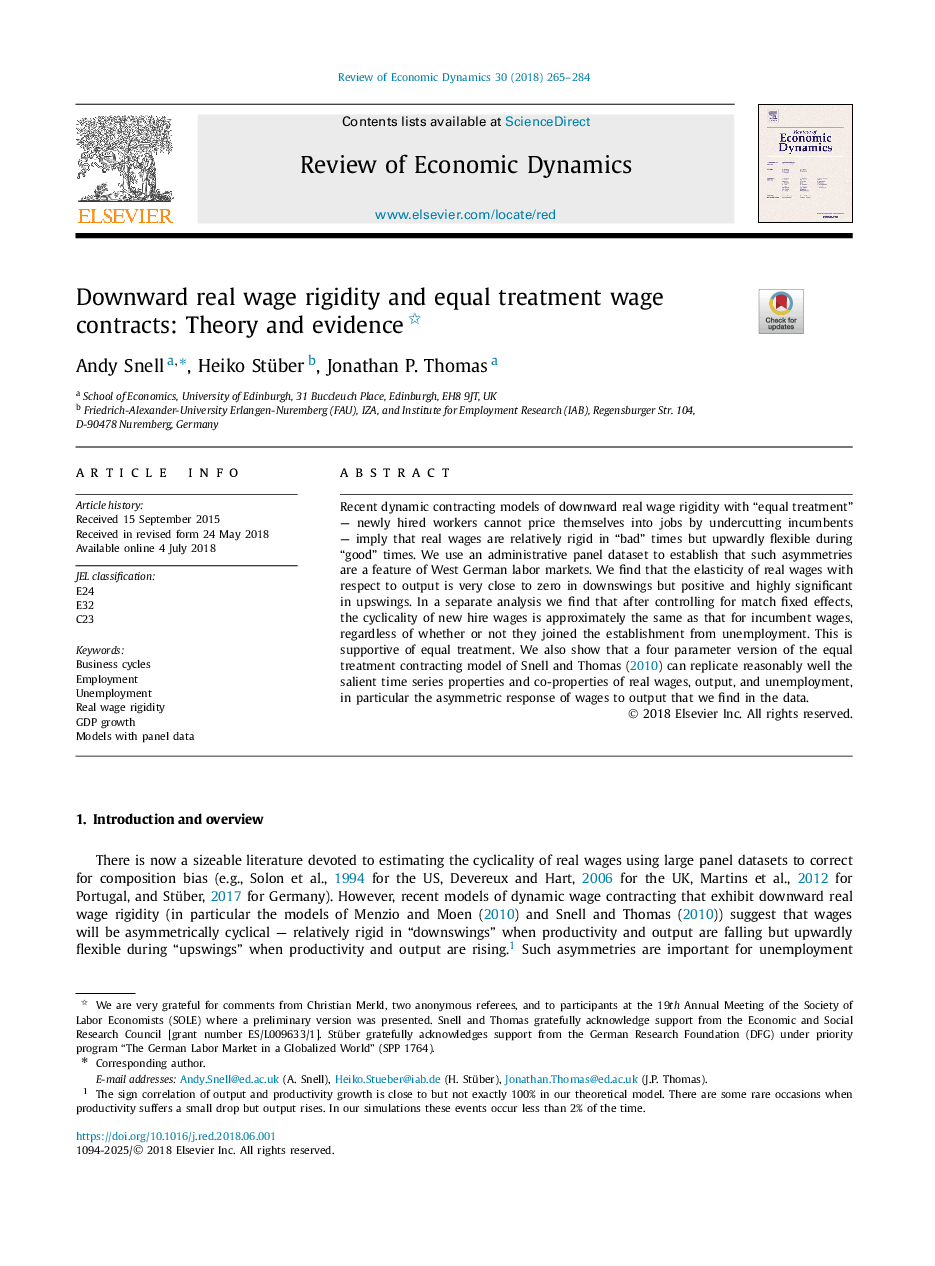| Article ID | Journal | Published Year | Pages | File Type |
|---|---|---|---|---|
| 7388123 | Review of Economic Dynamics | 2018 | 20 Pages |
Abstract
Recent dynamic contracting models of downward real wage rigidity with “equal treatment” - newly hired workers cannot price themselves into jobs by undercutting incumbents - imply that real wages are relatively rigid in “bad” times but upwardly flexible during “good” times. We use an administrative panel dataset to establish that such asymmetries are a feature of West German labor markets. We find that the elasticity of real wages with respect to output is very close to zero in downswings but positive and highly significant in upswings. In a separate analysis we find that after controlling for match fixed effects, the cyclicality of new hire wages is approximately the same as that for incumbent wages, regardless of whether or not they joined the establishment from unemployment. This is supportive of equal treatment. We also show that a four parameter version of the equal treatment contracting model of Snell and Thomas (2010) can replicate reasonably well the salient time series properties and co-properties of real wages, output, and unemployment, in particular the asymmetric response of wages to output that we find in the data.
Related Topics
Social Sciences and Humanities
Economics, Econometrics and Finance
Economics and Econometrics
Authors
Andy Snell, Heiko Stüber, Jonathan P. Thomas,
